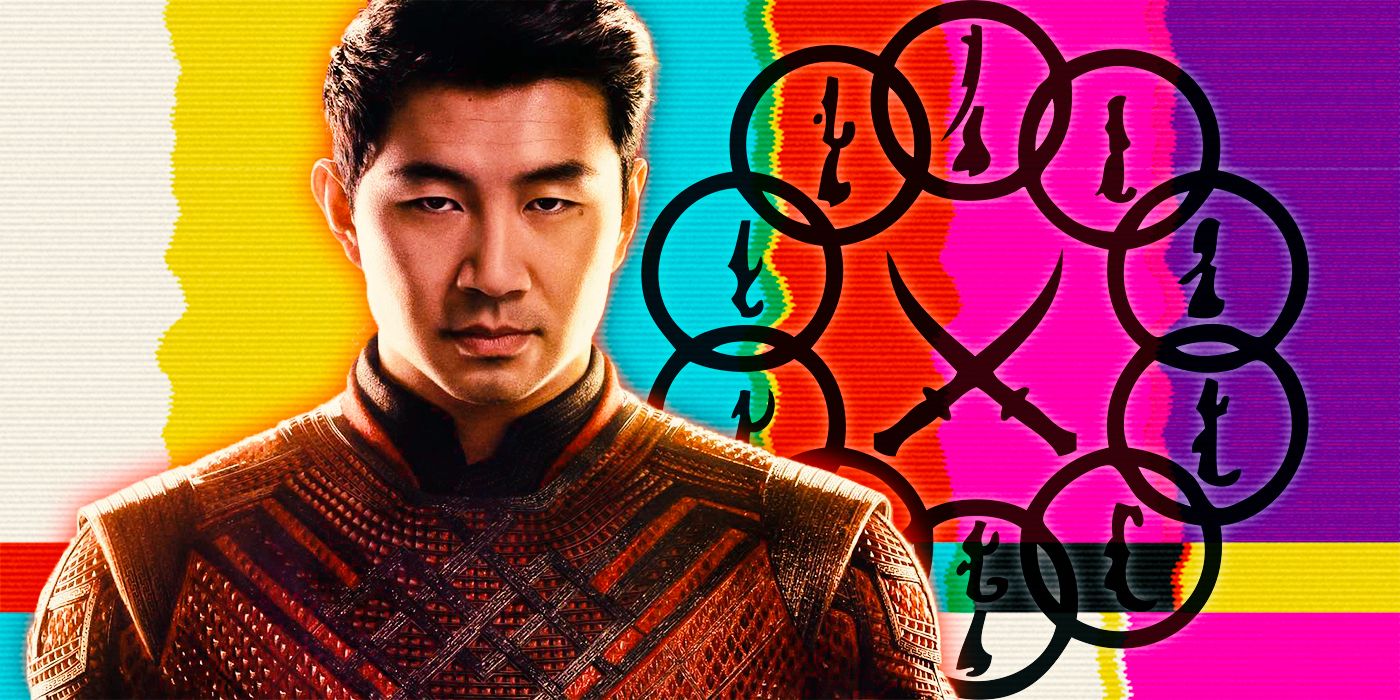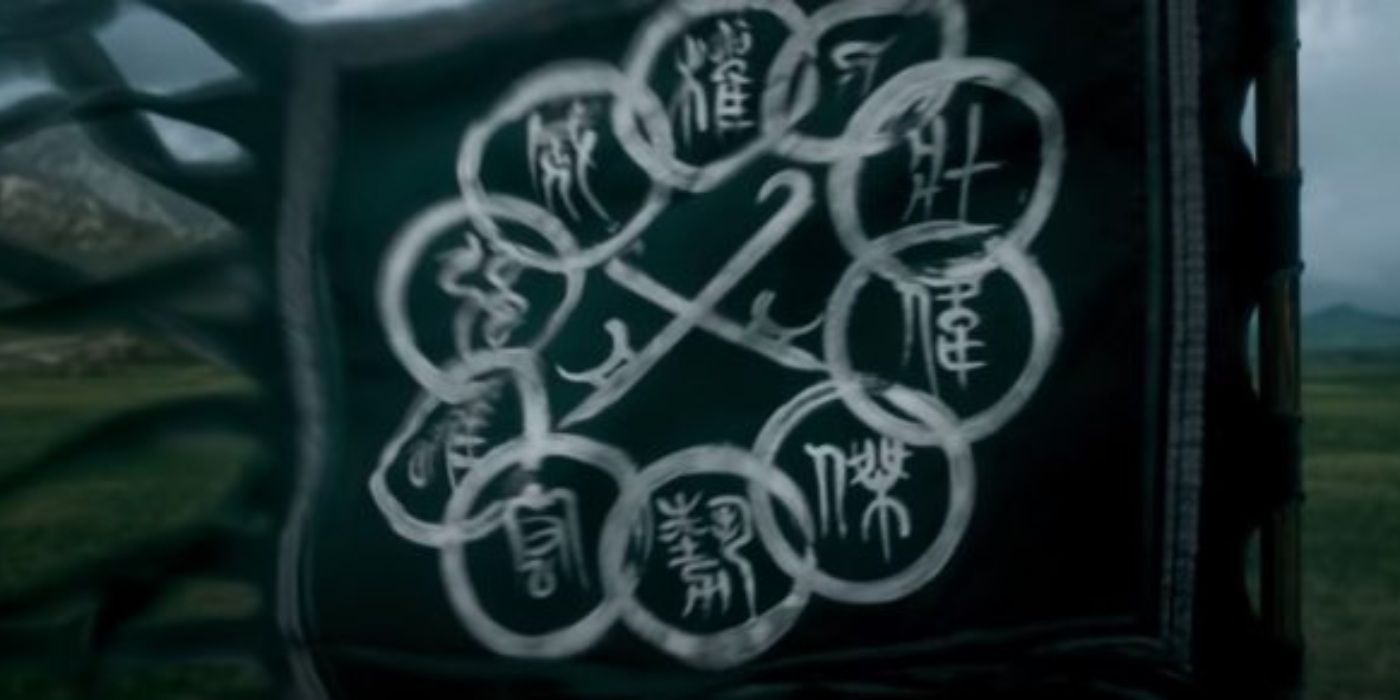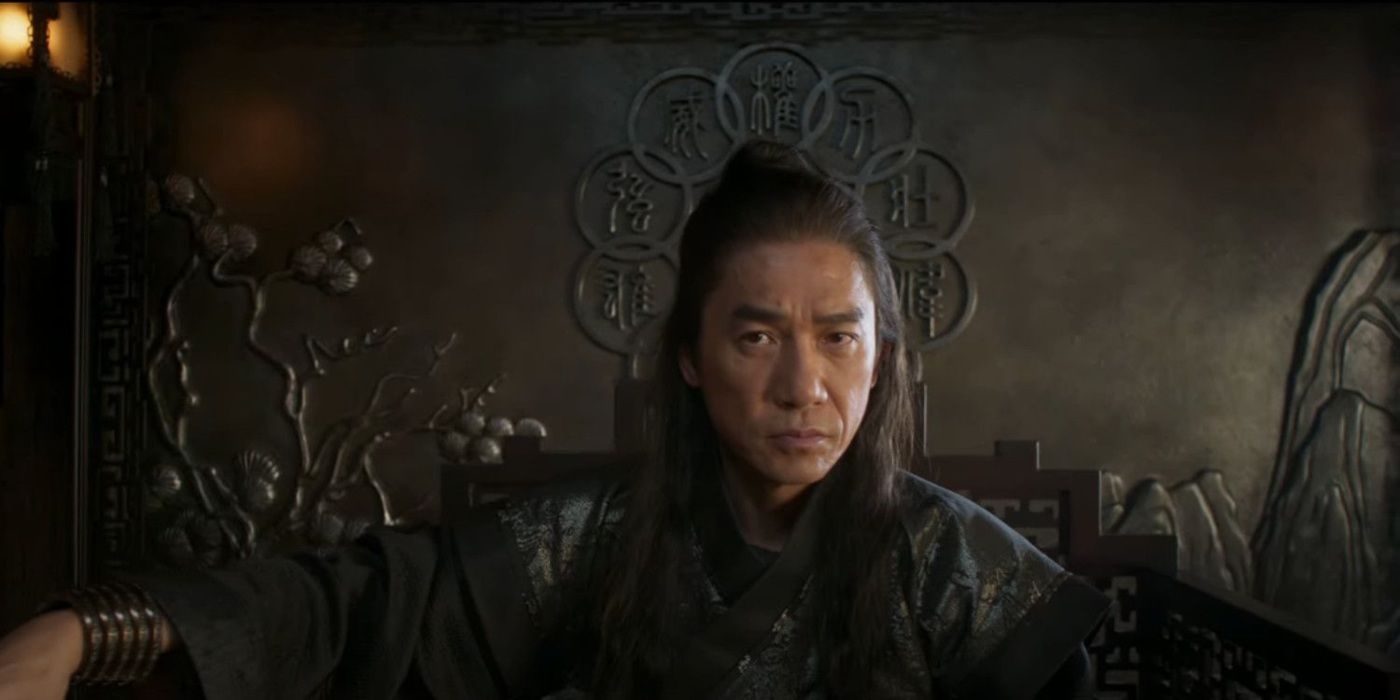
From early on, Shang-Chi and the Legend of the Ten Rings was touted as an important step in terms of Asian representation, particularly for Chinese-Americans. But while that is the case, a small change to an aspect of the story has some troubling ramifications. The issue arises with the titular Ten Rings' emblem, which was introduced in Iron Man, returned in Iron Man 3 and redesigned for Shang-Chi.
When it debuted in 2008's Iron Man, it was used to represent a vaguely Middle-Eastern terrorist organization based in Afghanistan. Despite its apparent base of operations and overall make-up, the emblem inexplicably bore writing in Mongolian script. That was a conscious decision by designer Dianne Chadwick, who later explained that it was chosen in order to hint at a greater story behind the Ten Rings. What it did was upset Mongolian audiences when the logo returned in 2013's Iron Man 3, because, up until then, it appeared that it was only ever connected to a terrorist organization based in the Middle East. And the result was that the Mongolian government issued a formal letter of complaint against Marvel Studios for its use of the historic script.

Fast forward to 2021, and Mongolian Minister of Culture, Sports and Tourism, Oyungerel Tsedevdamba, expressed regret over sending that letter, which is heartbreaking because Shang-Chi and the Legend of the Ten Rings replaced the Mongolian script in the emblem with Chinese characters, ostensibly to better reflect its place as an arm of Wenwu's power. But in order to understand why that it such a tragic thing, it's first important to establish that since Chinese head Xi Jinping came into power in 2013, the Chinese Communist Party (CCP) has cracked down harder than it has before on erasing minority cultures in regions surrounding it, including that of the Uyghur people, Tibetans, Hong Kong and indeed, Inner Mongolia.
The CCP continues to reshape every facet of Mongolian culture so it's either suppressed or eradicated. Mongolian teachers and schools were pressured into abandoning Mongolian in favor of Mandarin as part of what the state called a "bilingual education programme." This predominately affects three subjects: politics, history, and language and literature. The CCP has gone so far as to try and stamp out Mongolian culture beyond the borders of Mongolia and China as well. In 2020, the Chinese government pressured a museum in Nantes, France, to abandon terminology relating to Mongolian history, including "Genghis Khan," "Empire" and "Mongol." And the Château des ducs de Bretagne history museum eventually complied with the Chinese government's demands and put on hold its exhibition centered on Genghis Khan.
All of this has been done in order to ensure only Han Chinese culture and people populate China and what it views as its territories, although Inner Mongolia, Xinjiang (or East Turkestan), Hong Kong and Tibet are technically autonomous regions. Few of these cultures and peoples are explored in mainstream film, which ties back into Shang-Chi and the Legend of the Ten Rings.
As positive a sign as Shang-Chi is that Marvel Studios is finally stepping toward greater representation of minorities in the United States, it must also be viewed in the context of Disney's attempts to crack into the Chinese market, which was worth approximately $9 billion in terms of box office earnings prior to the COVID-19 pandemic. It's no secret that major Hollywood studios have given their best to appease Chinese censors and make certain that movies like Mulan, Godzilla Vs. Kong and Shang-Chi make it into the quota of foreign films allowed to screen in Chinese cinemas. Interestingly, however, the latest entry to the MCU still hasn't been given a release date in China. Sometimes that has meant the continued lack of representation for the minorities facing the erasure of their cultures.

Knowing what China has done, and continues to do, makes something as seemingly minuscule as a flag waving in the background of a film deeply troubling. It was best captured by Tsedevdamba, who, upon reflection some years later, explained, "My complaint was the kind that a happy child makes about just having bread but not cake on the table... When even the bread disappears, everything looks good, even a terrorist logo. I wish Marvel had stood firm on its use of Mongolian script. I want the world to use it -- any movie, in any way."
To see how the Ten Rings logo is changed, Shang-Chi and the Legend of the Ten Rings is now playing in theaters.
0 Comments